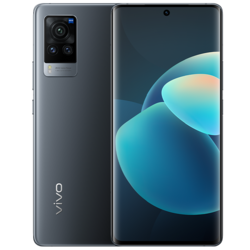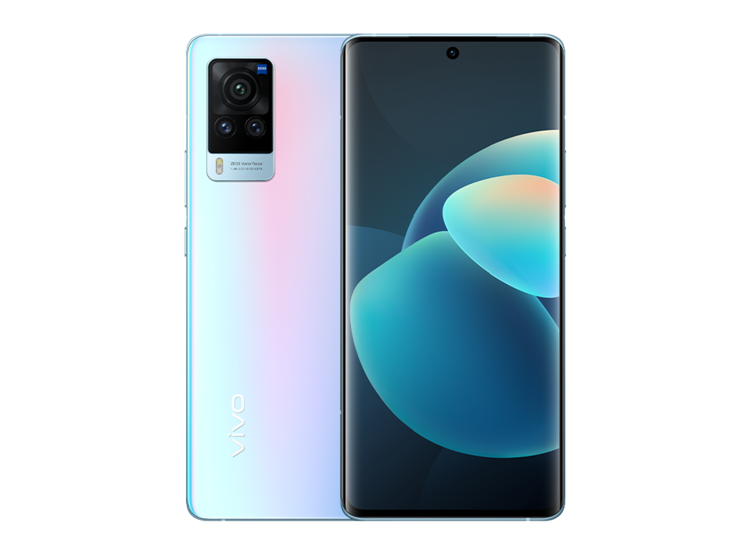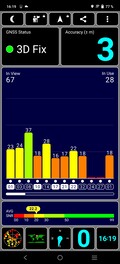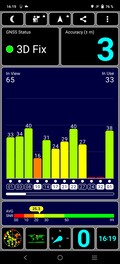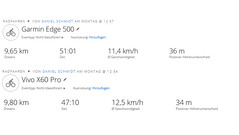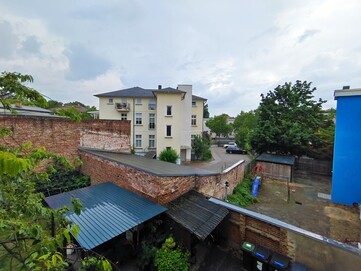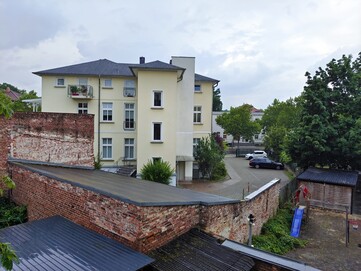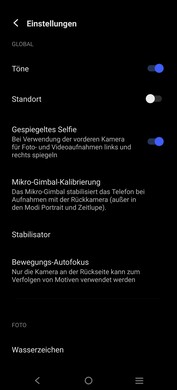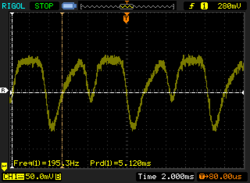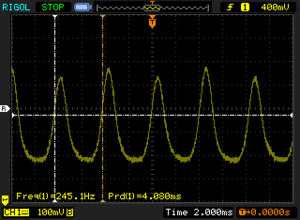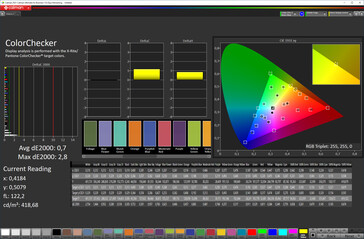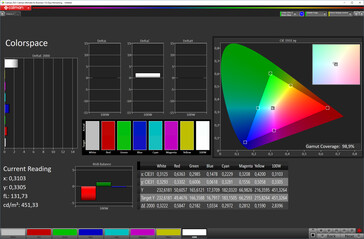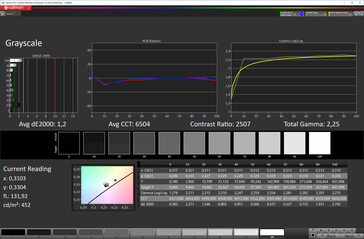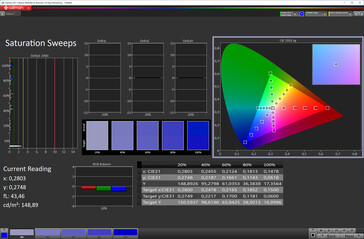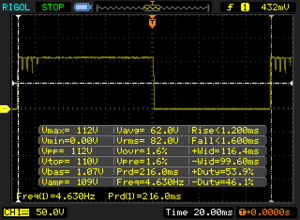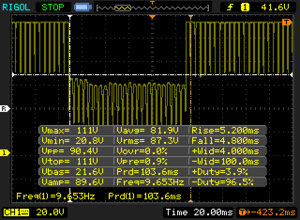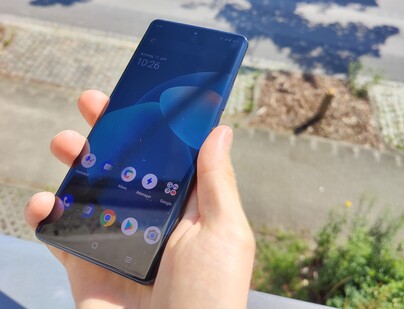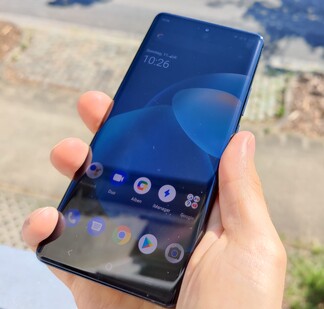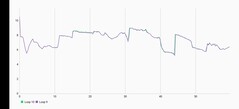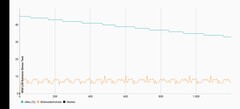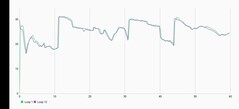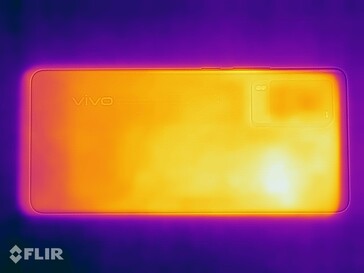Vivo X60 Pro review - Upper-class smartphone with virtual RAM & gimbal camera
The X60 Pro from Vivo is the first smartphone to be launched as part of the strategic partnership between the Chinese manufacturer and Zeiss, which was announced in December 2020. Vivo's promising gimbal technology of the Vivo X50 Pro, which will be available in this country as the X51 5G, is said to have been improved once again in the course of the cooperation.
In China, the Vivo X60 was launched at the end of last year with the 5 nm Exynos 1080 from Samsung and a periscope camera for zoom shots. However, the global version of the Vivo smartphone available here with the 6.56-inch 120 Hz AMOLED display features a Snapdragon 870, a slightly faster Snapdragon 865 from the previous year. In addition, the global X60 Pro loses the periscope zoom camera of the Chinese variant and is only launched with a triple cam in this country.
Possible competitors in comparison
Rating | Date | Model | Weight | Drive | Size | Resolution | Price |
|---|---|---|---|---|---|---|---|
| 87.5 % v7 (old) | 07 / 2021 | Vivo X60 Pro SD 870, Adreno 650 | 177 g | 256 GB UFS 3.1 Flash | 6.56" | 2376x1080 | |
| 86.4 % v7 (old) | 06 / 2021 | ZTE Axon 30 Ultra 5G SD 888 5G, Adreno 660 | 188 g | 128 GB UFS 3.1 Flash | 6.68" | 2400x1080 | |
| 87.3 % v7 (old) | 02 / 2021 | Xiaomi Mi 11 SD 888 5G, Adreno 660 | 196 g | 128 GB UFS 3.1 Flash | 6.81" | 3200x1440 | |
| 87.2 % v7 (old) | 04 / 2021 | OnePlus 9 SD 888 5G, Adreno 660 | 192 g | 256 GB UFS 3.1 Flash | 6.55" | 2400x1080 | |
| 89.6 % v7 (old) | 02 / 2021 | Samsung Galaxy S21+ Exynos 2100 5G, Mali-G78 MP14 | 200 g | 128 GB UFS 3.1 Flash | 6.70" | 2400x1080 |
Case - X60 Pro with Punch-Hole
The case is made of glass and metal, is very well manufactured and feels good in the hands. With a weight of 177 g or 179 g (~6.2 or 6.3 oz) depending on the color, it is also pleasantly light.
In the X60 Pro neither Corning Gorilla Glass nor Asahi Dragontrail Glass, used for the X50 Pro, but a special lithium aluminosilicate glass called Xensation Up from the German manufacturer Schott, a sister company of Zeiss. This glass is supposed to compensate for drops from up to six times the height compared to conventional aluminosilicate glass in addition to a high scratch resistance.
Thanks to the relatively narrow display edges and the punch hole of only 3.96 mm (~0.16 in), the display-to-surface ratio of the Vivo phone is over 90 percent. The X60 Pro is only IP52 certified, so the casing is not water- and dust-proof.
Equipment - Vivo smartphone with USB 2.0
The internal UFS storage has a capacity of 256 GB. The actual available storage is lower at 226 GB due to the operating system and the preinstalled apps. MicroSD cards cannot be stored in Vivo's phone.
The 4,200 mAh battery is charged via the Type-C port with the USB 2.0 specification, which recognizes external peripherals via USB OTG. Wireless transmission of display content to external monitors via Miracast is also supported.
Software - X60 Pro with Android 11
The Chinese manufacturer installs Android version 11 as the operating system, which is supplemented by Vivo's own user interface FunTouch 11.1. The security patches are not quite up to date at the time of the test with May 2021. Vivo nevertheless promises three years of updates for its upper-class smartphone.
Communication and GNSS - Vivo cell phone with 5G
Vivo relies on the 5G standard and Bluetooth version 5.1 for the communication modules. An NFC chip for near field communication including Google Pay is also on board. The X60 Pro supports access to a total of 19 LTE bands and covers all relevant LTE frequencies for the German-speaking region.
The X60 Pro also offers a lot within the domestic WLAN. The current Wi-Fi standard WiFi 6 and multi-user MIMO are supported, which ensures high and relatively constant transfer rates in the home network. In combination with our reference router Netgear Nighthawk AX12, the Vivo phone achieves peak transfer rates of over 900 Mbps, which is appealing for a smartphone in this price range.
| Networking | |
| iperf3 transmit AX12 | |
| ZTE Axon 30 Ultra 5G | |
| Vivo X60 Pro | |
| Samsung Galaxy S21+ | |
| Samsung Galaxy S21+ | |
| OnePlus 9 | |
| Xiaomi Mi 11 | |
| iperf3 receive AX12 | |
| Vivo X60 Pro | |
| Samsung Galaxy S21+ | |
| Samsung Galaxy S21+ | |
| Xiaomi Mi 11 | |
| ZTE Axon 30 Ultra 5G | |
| OnePlus 9 | |
The position is determined using the GPS (L1+L5), GLONASS, BeiDou (B1+B1+B2a) and Galileo (E1+E5a) satellite systems. In order to assess the positioning accuracy of our test device in practice, we record a route with a Garmin Edge 500 in parallel for comparison purposes. The GPS module's deviations are satisfactory over the course of the route. About 150 meters (~164 yards) difference is between the Vivo smartphone and the navigation device at the end of the ten-kilometer (~16 miles) test route.
Phone features and voice quality - X60 Pro with dual SIM
Dual-SIM, VoLTE and calls via the home WLAN are supported by the X60 Pro. The intelligibility during test calls is good, but the maximum volume of the earpiece could be a bit higher. Voice reproduction is natural, and the quality of the two microphones was described as easy to understand by our call partner.
Cameras - Vivo smartphone with gimbal cam
The front-facing camera has a resolution of 32 MP and offers a good quality, which is quite suitable for the one or other snapshot. Colors look realistic, and blurring is kept within limits - at least in photo mode.
The X60 Pro also features three rear-facing cameras. The 48 MP main sensor delivers very decent results with good dynamics in a lot of light, even though the sharpness visibly decreases in the peripheral areas. The noise level is quite high and the basic sharpness is low in less well-lit scenes.
The demands have to be lowered for the 13 MP ultra-wide-angle lens. The pictures offer a good contrast, but the sharpness is not particularly high and the photos have many image errors. In terms of zoom, the X60 Pro can convince with quite satisfactory results up to 5x, but the photos get a bit reddish.
Video recordings are recorded in a maximum UHD resolution of 3,840 x 2,160 pixels at 60 fps. The Gimbal Stabilization 2.0 builds on last year's four-axis image stabilization solution, but now offers a fifth axis for video recordings that stabilizes unintentional rotations of the smartphone. The recordings are satisfactory, but especially the stabilization of the "super anti-shake" mode is a bit disappointing since no real improvements are visible here compared to a classic OIS smartphone.
Image comparison
Choose a scene and navigate within the first image. One click changes the position on touchscreens. One click on the zoomed-in image opens the original in a new window. The first image shows the scaled photograph of the test device.
Wide angleWide angleLow Light5x ZoomUltra wide angle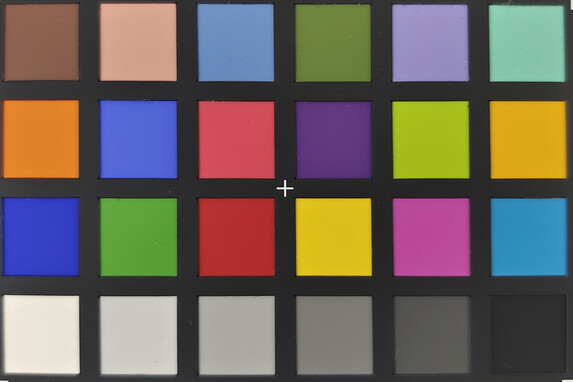

Accessories and warranty - X60 Pro with case
The accessories list of the X60 Pro includes a headset, a charger as well as a USB cable and a protective cover. A protective film is also applied to the display ex-works.
The warranty is 24 months after the purchase date.
Input devices & operation - X60 Pro with 240 Hz sampling rate
Not only is the panel's refresh rate very high at 120 Hz, but the touchscreen's sampling rate of up to 240 updates per second also ensures responsive processing of inputs on the 6.56-inch OLED panel.
Below the display is an optical fingerprint sensor that responds quickly and reliably. Biometric authentication via facial recognition using the front-facing camera also unlocks the X60 Pro quickly, but quite insecurely (2D).
Display - Vivo cell phone with 120 Hz
The OLED panel of the X60 Pro resolves, like its Predecessor, has a resolution of 2,376 x 1,080 pixels at a diagonal of 6.56 inches and thus achieves a pixel density of almost 400 ppi, which ensures sufficiently sharp display content in normal use and at usual viewing distances.
The X60 Pro interprets the panel's refresh rate relatively conventionally. There are 60 Hz, 120 Hz and an auto mode available, whereby the latter only adjusts the 120 Hz and 60 Hz automatically, in contrast to an adaptive solution such as the a Galaxy S21 Ultra, among others.
The maximum luminance of about 800 cd/m² that we measured is very satisfactory for an upper-class smartphone. A Xiaomi Mi 11 however, gets a bit brighter in our measurements. Even the realistic APL50 test with evenly distributed bright and dark areas does not come close to the values of the Xiaomi phone with 983 cd/m².
To control the luminance, the X60 Pro uses PWM over the entire brightness range with a rather low but very even frequency of 236-245 Hz. In DC dimming mode, it is 120-195 Hz.
| |||||||||||||||||||||||||
Brightness Distribution: 98 %
Center on Battery: 792 cd/m²
Contrast: ∞:1 (Black: 0 cd/m²)
ΔE ColorChecker Calman: 0.7 | ∀{0.5-29.43 Ø4.77}
ΔE Greyscale Calman: 1.2 | ∀{0.09-98 Ø5}
98.9% sRGB (Calman 2D)
Gamma: 2.25
CCT: 6504 K
| Vivo X60 Pro AMOLED, 2376x1080, 6.6" | ZTE Axon 30 Ultra 5G AMOLED, 2400x1080, 6.7" | Xiaomi Mi 11 LED DotDisplay, 3200x1440, 6.8" | OnePlus 9 AMOLED, 2400x1080, 6.6" | Samsung Galaxy S21+ Dynamic AMOLED 2X, 2400x1080, 6.7" | |
|---|---|---|---|---|---|
| Screen | -236% | -20% | 13% | -38% | |
| Brightness middle (cd/m²) | 792 | 638 -19% | 840 6% | 731 -8% | 814 3% |
| Brightness (cd/m²) | 796 | 641 -19% | 845 6% | 739 -7% | 814 2% |
| Brightness Distribution (%) | 98 | 93 -5% | 98 0% | 96 -2% | 97 -1% |
| Black Level * (cd/m²) | |||||
| Colorchecker dE 2000 * | 0.7 | 4 -471% | 1.2 -71% | 0.59 16% | 2 -186% |
| Colorchecker dE 2000 max. * | 2.8 | 14 -400% | 2.7 4% | 1.3 54% | 3.6 -29% |
| Greyscale dE 2000 * | 1.2 | 7.2 -500% | 2 -67% | 0.9 25% | 1.4 -17% |
| Gamma | 2.25 98% | 2.27 97% | 2.26 97% | 2.243 98% | 2.12 104% |
| CCT | 6504 100% | 7190 90% | 6492 100% | 6573 99% | 6568 99% |
* ... smaller is better
Screen Flickering / PWM (Pulse-Width Modulation)
| Screen flickering / PWM detected | 245.1 Hz | ≤ 100 % brightness setting | |
The display backlight flickers at 245.1 Hz (worst case, e.g., utilizing PWM) Flickering detected at a brightness setting of 100 % and below. There should be no flickering or PWM above this brightness setting. The frequency of 245.1 Hz is relatively low, so sensitive users will likely notice flickering and experience eyestrain at the stated brightness setting and below. In comparison: 53 % of all tested devices do not use PWM to dim the display. If PWM was detected, an average of 8084 (minimum: 5 - maximum: 343500) Hz was measured. | |||
Besides pronounced contrasts, the Vivo smartphone offers HDR10+ certification and a high color space coverage. The panel is very well calibrated ex-factory. The analysis of the photospectrometer and the CalMAN software results in very low average Delta E deviations from the sRGB color space of 0.7 (colors) and 1.2 (grayscale), respectively. However, to achieve the high accuracy, the smaller color space must also be used.
Display Response Times
| ↔ Response Time Black to White | ||
|---|---|---|
| 2.8 ms ... rise ↗ and fall ↘ combined | ↗ 1.2 ms rise | |
| ↘ 1.6 ms fall | ||
| The screen shows very fast response rates in our tests and should be very well suited for fast-paced gaming. In comparison, all tested devices range from 0.1 (minimum) to 240 (maximum) ms. » 12 % of all devices are better. This means that the measured response time is better than the average of all tested devices (20.2 ms). | ||
| ↔ Response Time 50% Grey to 80% Grey | ||
| 10 ms ... rise ↗ and fall ↘ combined | ↗ 5.2 ms rise | |
| ↘ 4.8 ms fall | ||
| The screen shows good response rates in our tests, but may be too slow for competitive gamers. In comparison, all tested devices range from 0.165 (minimum) to 636 (maximum) ms. » 22 % of all devices are better. This means that the measured response time is better than the average of all tested devices (31.6 ms). | ||
Performance - X60 Pro with Snapdragon SoC
The CPU used in the X60 Pro is a Qualcomm Snapdragon 870 that integrates eight cores, divided into three clusters. The fastest Cortex-A77 core reaches up to 3.2 GHz, the performance cluster including three Cortex-A77 cores up to 2.42 GHz and the energy-saving cluster including four frugal Cortex-A55 cores up to 1.8 GHz. The graphics card is an Adreno 650.
The system speed of the Vivo smartphone is first-rate. The operation is pleasantly smooth in everyday use, and there are almost no lags. Thanks to the fast UFS 3.1 storage and the responsive panel, applications open almost instantaneously.
The scores in our benchmark measurements are also on a good level, even though the competition with the current SoC generation offers more performance. The 15 GB working memory does not help either. The X60 Pro uses 12 GB of fixed RAM as well as 3 GB of virtual RAM, which is reserved for data storage on the flash memory. However, the X60 Pro scores particularly well in Geekbench, where the values are higher than those of other Snapdragon 870 smartphones, such as the Poco F3.
| AImark - Score v2.x (sort by value) | |
| Vivo X60 Pro | |
| ZTE Axon 30 Ultra 5G | |
| Xiaomi Mi 11 | |
| OnePlus 9 | |
| Samsung Galaxy S21+ | |
| Xiaomi Poco F3 | |
| Average Qualcomm Snapdragon 870 5G (111838 - 123847, n=9) | |
| Jetstream 2 - 2.0 Total Score | |
| Average of class Smartphone (23.8 - 387, n=147, last 2 years) | |
| ZTE Axon 30 Ultra 5G (chrome 90) | |
| Average Qualcomm Snapdragon 870 5G (60.7 - 108.3, n=12) | |
| Xiaomi Mi 11 (Chrome 88) | |
| Samsung Galaxy S21+ (Chrome 88.0.4324.152) | |
| OnePlus 9 (MS Edge) | |
| Vivo X60 Pro (Chrome91) | |
| Speedometer 2.0 - Result 2.0 | |
| Average of class Smartphone (15.2 - 643, n=119, last 2 years) | |
| ZTE Axon 30 Ultra 5G (chrome 90) | |
| Samsung Galaxy S21+ (Chrome 88.0.4324.152) | |
| Average Qualcomm Snapdragon 870 5G (51.4 - 77, n=12) | |
| Xiaomi Mi 11 (Chrome 88) | |
| OnePlus 9 (MS Edge) | |
| Vivo X60 Pro (Chrome91) | |
| WebXPRT 3 - Overall | |
| Average of class Smartphone (38 - 380, n=30, last 2 years) | |
| ZTE Axon 30 Ultra 5G (chrome 90) | |
| Average Qualcomm Snapdragon 870 5G (94 - 155, n=13) | |
| Xiaomi Mi 11 (Chrome 88) | |
| OnePlus 9 (MS Edge) | |
| Samsung Galaxy S21+ (Chrome 88.0.4324.152) | |
| Vivo X60 Pro (Chrome91) | |
| Octane V2 - Total Score | |
| Average of class Smartphone (2228 - 126661, n=194, last 2 years) | |
| ZTE Axon 30 Ultra 5G (chrome 90) | |
| Average Qualcomm Snapdragon 870 5G (20543 - 41256, n=13) | |
| Samsung Galaxy S21+ (Chrome 88.0.4324.152) | |
| Xiaomi Mi 11 (Chrome 88) | |
| OnePlus 9 (Chrome89) | |
| Vivo X60 Pro (Chrome91) | |
| Vivo X60 Pro | ZTE Axon 30 Ultra 5G | Xiaomi Mi 11 | OnePlus 9 | Samsung Galaxy S21+ | Average 256 GB UFS 3.1 Flash | Average of class Smartphone | |
|---|---|---|---|---|---|---|---|
| AndroBench 3-5 | -17% | -5% | -12% | 6% | 15% | 46% | |
| Sequential Read 256KB (MB/s) | 1757 | 1464 -17% | 1615 -8% | 1872 7% | 1623 -8% | 1757 ? 0% | 2235 ? 27% |
| Sequential Write 256KB (MB/s) | 791 | 689 -13% | 754 -5% | 739 -7% | 1037 31% | 1204 ? 52% | 1871 ? 137% |
| Random Read 4KB (MB/s) | 298.5 | 208.2 -30% | 278.5 -7% | 225.4 -24% | 309.6 4% | 287 ? -4% | 297 ? -1% |
| Random Write 4KB (MB/s) | 288.5 | 265 -8% | 289.3 0% | 221.4 -23% | 283.3 -2% | 318 ? 10% | 343 ? 19% |
Games - X60 Pro plays demanding games
The powerful graphics unit, the Adreno 650 provides enough computing power for smooth playback even for demanding games from the Play Store. The best graphics option is also available with UHD in PUBG mobile.
Emissions - X60 Pro only with mono sound
Temperature
The case of the Vivo smartphone heats up within a normal range under permanent load. We also analyze the SoC's temperature behavior under continuous load with the 3DMark stress tests. The X60 Pro achieves very good rates here, which attest to the upper-class phone's constant performance.
| 3DMark | |
| Wild Life Stress Test Stability | |
| Vivo X60 Pro | |
| ZTE Axon 30 Ultra 5G | |
| Xiaomi Mi 11 | |
| Samsung Galaxy S21+ | |
| OnePlus 9 | |
| Wild Life Extreme Stress Test | |
| Vivo X60 Pro | |
| ZTE Axon 30 Ultra 5G | |
(+) The maximum temperature on the upper side is 38.8 °C / 102 F, compared to the average of 35.2 °C / 95 F, ranging from 21.9 to 247 °C for the class Smartphone.
(+) The bottom heats up to a maximum of 37.4 °C / 99 F, compared to the average of 34 °C / 93 F
(+) In idle usage, the average temperature for the upper side is 30.4 °C / 87 F, compared to the device average of 32.9 °C / 91 F.
Speaker
The X60 Pro only has a mono speaker, but it offers a high maximum volume of 94 dB(A) and a quite linear reproduction. For those who prefer a wireless variant via Bluetooth 5.1, the codecs AAC, LDAC as well as aptX, aptX HD and aptX Adaptive are available.
Vivo X60 Pro audio analysis
(+) | speakers can play relatively loud (94.1 dB)
Bass 100 - 315 Hz
(-) | nearly no bass - on average 20.2% lower than median
(+) | bass is linear (4.1% delta to prev. frequency)
Mids 400 - 2000 Hz
(±) | reduced mids - on average 6.6% lower than median
(+) | mids are linear (5.5% delta to prev. frequency)
Highs 2 - 16 kHz
(±) | higher highs - on average 5.6% higher than median
(+) | highs are linear (5.3% delta to prev. frequency)
Overall 100 - 16.000 Hz
(±) | linearity of overall sound is average (17.8% difference to median)
Compared to same class
» 14% of all tested devices in this class were better, 9% similar, 77% worse
» The best had a delta of 11%, average was 35%, worst was 134%
Compared to all devices tested
» 35% of all tested devices were better, 8% similar, 57% worse
» The best had a delta of 4%, average was 24%, worst was 134%
Xiaomi Mi 11 audio analysis
(+) | speakers can play relatively loud (86.8 dB)
Bass 100 - 315 Hz
(-) | nearly no bass - on average 26% lower than median
(±) | linearity of bass is average (9.5% delta to prev. frequency)
Mids 400 - 2000 Hz
(+) | balanced mids - only 4.5% away from median
(+) | mids are linear (5.3% delta to prev. frequency)
Highs 2 - 16 kHz
(+) | balanced highs - only 4.5% away from median
(+) | highs are linear (2.3% delta to prev. frequency)
Overall 100 - 16.000 Hz
(±) | linearity of overall sound is average (17.8% difference to median)
Compared to same class
» 14% of all tested devices in this class were better, 9% similar, 77% worse
» The best had a delta of 11%, average was 35%, worst was 134%
Compared to all devices tested
» 35% of all tested devices were better, 8% similar, 57% worse
» The best had a delta of 4%, average was 24%, worst was 134%
Battery life - Vivo phone with Fast Charging
Energy consumption
The consumption of the X60 Pro is overall okay, although the power consumption in idle mode could have been a bit more efficient. When fully discharged, the Vivo phone needs about 60 minutes with the included 33-watt power supply until it reaches 100 percent battery charge again.
| Off / Standby | |
| Idle | |
| Load |
|
Key:
min: | |
| Vivo X60 Pro 4200 mAh | ZTE Axon 30 Ultra 5G 4600 mAh | Xiaomi Mi 11 4600 mAh | OnePlus 9 4500 mAh | Samsung Galaxy S21+ 4800 mAh | Average Qualcomm Snapdragon 870 5G | Average of class Smartphone | |
|---|---|---|---|---|---|---|---|
| Power Consumption | -22% | -40% | -28% | -1% | -40% | -16% | |
| Idle Minimum * (Watt) | 0.93 | 1 -8% | 1.57 -69% | 0.9 3% | 0.74 20% | 1.23 ? -32% | 0.847 ? 9% |
| Idle Average * (Watt) | 1.52 | 1.99 -31% | 1.92 -26% | 1.7 -12% | 1.27 16% | 2.17 ? -43% | 1.448 ? 5% |
| Idle Maximum * (Watt) | 1.55 | 2.02 -30% | 1.94 -25% | 2.7 -74% | 1.33 14% | 2.49 ? -61% | 1.633 ? -5% |
| Load Average * (Watt) | 4.69 | 5.15 -10% | 6.32 -35% | 5.4 -15% | 6.32 -35% | 6.39 ? -36% | 6.96 ? -48% |
| Load Maximum * (Watt) | 7.92 | 10.36 -31% | 11.65 -47% | 11.1 -40% | 9.61 -21% | 9.94 ? -26% | 11.3 ? -43% |
* ... smaller is better
Power consumption: Geekbench (150 cd/m²)
Power consumption: GFXBench (150 cd/m²)
Battery life
In our WLAN test, the X60 Pro shows a decent runtime of eleven hours under practical conditions (display brightness at 150 cd/m²) with a refresh rate of 120 Hz.
| Vivo X60 Pro 4200 mAh | ZTE Axon 30 Ultra 5G 4600 mAh | Xiaomi Mi 11 4600 mAh | OnePlus 9 4500 mAh | Samsung Galaxy S21+ 4800 mAh | |
|---|---|---|---|---|---|
| Battery runtime | |||||
| WiFi v1.3 (h) | 11.1 | 10.3 -7% | 8.8 -21% | 14.2 28% | 10.9 -2% |
Pros
Cons
Conclusion about the Vivo X60 Pro
The Vivo X60 Pro is a lightweight, well-made premium smartphone with a pleasant feel. The bright 120 Hz AMOLED panel is undoubtedly on the plus side as well, although it only offers a 1080p resolution. The performance of the Snapdragon 870 in combination with a lot of RAM ensures a good performance in the Vivo phone. However, a (slightly modified) previous year's SoC is rather the exception in this price range.
Unfortunately, the price (MSRP) is not hot at all.
Overall, the Chinese manufacturer's pricing policy is not entirely comprehensible. The X60 Pro, which is better equipped in China and rather belongs to the upper mid-range, is sold here for an MSRP of 799 Euros (~$942). Compared to a Xiaomi Mi 11, it lacks a number of features, such as wireless charging or stereo speakers, the latest generation of processors, or a WQHD resolution.
Those who accept some sacrifices in terms of the camera will get a better price with the Poco F3, a 120 Hz AMOLED behemoth with Snapdragon 870 and stereo sound for less than half the price of a Vivo X60 Pro.
Price and availability
Vivo's new flagship model, the X60 Pro, is available at a RRP of 799 Euros (~$942) at Cyberport, among others.
Vivo X60 Pro
- 08/31/2022 v7 (old)
Marcus Herbrich





